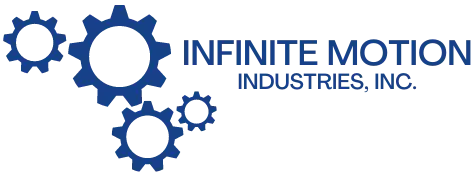The True Cost of Inefficient Equipment: When to Repair vs. Replace
For plant managers and production managers, inefficient equipment isn’t just an inconvenience—it’s a direct threat to productivity, profitability, and operational stability. Deciding whether to repair or replace underperforming machinery is a critical business decision that requires a careful analysis of costs, performance, and long-term ROI.
In many cases, outdated equipment continues running at the expense of efficiency, energy consumption, and increased downtime—costs that often outweigh the price of investing in new machinery. But how do you determine when it’s time to make the switch?
In this guide, we’ll break down the hidden costs of inefficient equipment, the key factors to consider when deciding between repair and replacement, and best practices for a smooth transition if you decide to upgrade.
The Hidden Costs of Inefficient Equipment
1. Downtime and Lost Productivity
Unexpected breakdowns are one of the biggest challenges in manufacturing. Every minute of downtime can mean lost production, missed deadlines, and dissatisfied customers. Even minor slowdowns add up over time, creating inefficiencies that directly impact revenue.
Questions to Ask:
✅ How often does this equipment fail, and what is the average downtime per incident?
✅ What is the cost per hour of lost production for this piece of equipment?
✅ Can the issue be resolved quickly, or is failure becoming a recurring problem?
🔹 Example Calculation:
A filling machine in a beverage plant produces 500 bottles per minute. If an unexpected breakdown takes two hours to fix, that’s 60,000 lost bottles. At a retail value of $0.75 per bottle, that’s $45,000 in lost revenue—for just one incident.
If downtime occurs frequently, it could be a sign that replacement is the more cost-effective solution.
2. Maintenance and Repair Costs
Routine maintenance is essential, but frequent breakdowns requiring costly emergency repairs can quickly erode profitability. While small, inexpensive repairs are manageable, major component failures (such as motors, PLCs, or control boards) may be a sign that your equipment is reaching the end of its useful life.
Questions to Ask:
✅ What is the annual maintenance cost for this equipment?
✅ Are replacement parts readily available, or are they becoming obsolete?
✅ Have maintenance costs increased significantly over the last 2–3 years?
🔹 Rule of Thumb:
If annual repair costs exceed 50% of the cost of a new machine, it’s time to replace.
🔹 Example:
If an old palletizer requires $20,000 per year in maintenance, but a new, more efficient system costs $50,000, replacement might be the better financial decision—especially if the new system offers increased speed and reliability.
3. Energy Efficiency and Operating Costs
Older equipment often consumes far more energy than modern alternatives, increasing operating costs. With rising utility prices and stricter environmental regulations, inefficient machinery can be a long-term financial drain.
Questions to Ask:
✅ How much energy does this equipment consume compared to modern alternatives?
✅ Could upgrading qualify for energy rebates or tax incentives?
✅ What are the total savings if energy efficiency improves by 10–30%?
🔹 Example:
An old air compressor uses 30% more energy than a high-efficiency model. If your plant’s annual electricity bill for compressed air is $100,000, upgrading could save $30,000 per year—potentially paying for itself within 2–3 years.
4. Compliance, Safety, and Liability Risks
Regulatory requirements (OSHA, FDA, USDA, EPA) are constantly evolving, and older equipment may not meet current safety or sanitation standards. If a machine is non-compliant, it could lead to costly fines, legal liabilities, or even production shutdowns.
Questions to Ask:
✅ Does this equipment comply with current OSHA, FDA, or USDA standards?
✅ Has this equipment contributed to safety incidents or near-misses?
✅ Are competitors using newer technology that gives them a compliance advantage?
🔹 Example:
If an outdated packaging machine fails an FDA inspection, your plant could face product recalls, reputational damage, and financial penalties—costing far more than simply upgrading to compliant equipment.
When to Repair vs. Replace: A Practical Decision Framework
✅ When Repair is the Best Option
✔ The issue is minor and can be fixed affordably (under 50% of replacement cost).
✔ The equipment is still within its expected lifespan.
✔ The machine still meets efficiency and quality requirements.
✔ Spare parts are readily available at reasonable costs.
❌ When Replacement is the Smarter Choice
✔ Annual repair costs exceed 50% of replacement cost.
✔ Equipment failures are causing frequent downtime and lost revenue.
✔ Energy and operating costs are significantly higher than modern alternatives.
✔ The machine no longer meets compliance or safety standards.
✔ Newer equipment offers a clear ROI through increased speed, automation, and efficiency.
Making the Transition: How to Minimize Disruptions
If replacing equipment is the best choice, careful planning and execution are key to minimizing downtime and maximizing ROI.
1. Plan for Off-Peak Installation
📅 Schedule upgrades during planned maintenance windows or slow production periods to avoid revenue loss.
2. Consider Phased Implementation
🔄 If a full replacement isn’t feasible, start with the most critical equipment and upgrade in stages.
3. Train Operators & Maintenance Teams
👷♂️ Ensure staff are trained on new systems to maximize uptime and avoid performance dips.
4. Leverage Data & Automation
📊 New equipment often comes with predictive maintenance, real-time monitoring, and automation capabilities that improve long-term efficiency.
Final Thoughts: Making an Informed Decision
For plant managers and production managers, the decision to repair or replace equipment should be data-driven, not reactive. While repairing aging machinery might seem like a short-term cost-saving measure, ignoring hidden inefficiencies can cost your plant far more in the long run.
By evaluating downtime costs, maintenance expenses, energy efficiency, and compliance risks, you can determine the most cost-effective and strategic course of action for your facility.
Need Expert Guidance?
If you’re struggling with inefficient equipment and unsure of the best path forward, contact us today for a comprehensive assessment and expert recommendations tailored to your operation!
